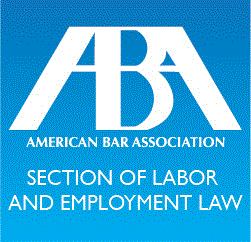Rice Law Office Blog
If I am seriously injured and can’t work, should I see a worker’s compensation attorney, an injury attorney or an employment Attorney?
Here's the Quick Answer:
If you have a serious injury or illness which will result in a period of disability you will want to seek help from someone who can help you with your employment, injury AND worker’s compensation issues because an early, informed and coordinated plan of approach is critical to your full protection. Serious injuries require a global approach.
The Rest of the Story:
Every case is unique and to get everything to which you are entitled you must be sure you have an attorney who understands ALL the benefits you have available and how to best coordinate them to maximize your coverage.
HOW TO RETIRE EARLY WITHOUT LOSING SOCIAL SECURITY BENEFITS
This is the third post in my series on social security and retirement strategies to increase your benefits. I have previously discussed the "file and suspend" strategy to increase retirement benefits for retired couples, as well as the future of the "file and suspend" loophole and who might benefit from this strategy while it lasts. In this post, I will be discussing how disabled individuals can obtain their full social security benefits, even if they are forced to stop working before their full retirement age (FRA).
There are many people who are opting to take early retirement and thereby accepting less than their full monthly retirement benefits, because they just can’t wait until their full retirement age (FRA) to stop working. Some people choose to take early retirement as a lifestyle choice. Some people choose early retirement as a result of a disability that forces them out of the workforce sooner than they had planned; for those people, who leave due to disability rather than choice, there maybe a better option.
Employees who are eligible for early retirement, but who have not yet reached their full retirement age, are eligible to receive their full social security benefit if they are deemed disabled by the Social Security Administration. Age is certainly not a disability, but there are times where people choose to retire early, not because it’s a choice, but because physical limitations have made it such that they can no longer work. These folks typically lose thousands and thousands of dollars in benefits over the course of their lifetime, simply by virtue of having retired a few years early.
Where early retirement comes as a result of an individual’s inability to continue to work, then it isn’t retirement; it is disability, and by applying for disability benefits instead of early retirement, people in their 60's might avoid taking a reduced benefit. Those who are eligible for disability retirement, as opposed to age related retirement, can receive their full social security benefits even if they haven’t reached their full retirement age.
Methods to Maximize Social Security Disability and Retirement Benefits
Part Two: Is File and Suspend a Closing Loop Hole or a Strategy for All?
This the second post in my three-part series on social security retirement strategies to increase your benefits. In this post, I will be discussing the future of the "file and suspend" loophole and who might benefit from this strategy while it lasts. I have previously discussed how the file and suspend strategy can be used to increase retirement benefits for retired couples. In my next post I will explain how workers considering early retirement might maximize benefits by applying for both social security retirement and disability benefits.
While our first article explained the"file and suspend" strategy for increasing retirement disability benefits for retired couples, this article aims to provide you with some information to help you determine if it might be something you want to discuss with your financial adviser.
There is disagreement as to whether or not the "file and suspend" strategy is a method of "gaming" the social security system, or whether it is simply smart financial planning. The Obama administration has made its opinion clear; it considers this strategy a loophole for the wealthy and as a result, it may soon be shut down because of the added cost it imposes on the social security program.
Methods to Maximize Social Security Disability and Retirement Benefits
Part one: What is File and Suspend?
This is my first post in my series on social security disability and retirement strategies to increase monthly benefits. In my first two posts, I will try to explain the concept of file and suspend as a strategy to increase retirement benefits and in the second post, I will address the controversy surrounding this option. In my third post I will address the method of dual filing for social security disability and retirement to maximize benefits for those forced to retire early due to disability.
File and suspend is a strategy used by married couples to increase retirement benefits. It’s easier than it sounds. Here’s how it works:
The spouse with the higher retirement benefit known as PIA (the formula for calculating benefits is called the Primary Insurance Amount or PIA) files for social security benefits at full retirement age, then immediately files a notice to suspend payment of those benefits. In many households the higher earner is the husband, so he would file for retirement at his full retirement age (as opposed to early retirement), but he would opt out of taking his actual payment.
Teachers in New Hampshire face unique issues and challenges when dealing with injuries at work. It’s wise to consult with a union representative or attorney early on to avoid unwitting errors in worker’s compensation which could result in significant loss down the road.
Worker’s compensation is a critically important benefit that provides numerous protections to employees injured on the job.
Worker’s Compensation is the insurance coverage for lost pay, medical bills and other damages caused by a work injury, but it does so much more. It also provides job protection for up to 18 months for temporary disability (as opposed to only 12 weeks under the FMLA which covers some non work related injuries) if an injury results in time out of work.
Further, while it does not provide compensation for pain and suffering, it does provide for a one time payment for certain injuries which are deemed permanent under the law, a benefit which can make the difference in meeting expenses in the case of a lengthy time out of work.
Even more important for some, a claim that is accepted as work related will entitle an employee to state disability retirement regardless of vesting. It essentially accelerates the vesting as of the date of injury. As vital as this benefit is, it has some loop holes and traps for the unwary which can be treacherous.
Not surprising to those of us who proudly call New Hampshire home, our great state was ranked number one in the nation according to Politico Magazine.
Politico averaged state rankings from 14 different categories, drawing from "reputable" sources like the census bureau, the Centers for Disease Control and Prevention and the FBI, and considering factors such as high school graduation rates, per capita income, life expectancy and crime rate. The result was a master list ranking of all 50 states, and NH sits at the top of the list with the #1 ranking. The article can be found on Politico's website.
Our neighbors also fared well with Vermont at #3, Massachusetts at #5 and Maine coming in at #4 in the nation.
GOOD NEWS FOR VETERANS-New Regulations Promote Hiring of Veterans and Individuals with Disabilities.
On August 27, 2013, the Office of Federal Contract Compliance Programs ("OFCCP") released its Final Rules under the Vietnam Era Veterans' Readjustment Assistance Act, as amended ("VEVRAA") and Section 503 of the Rehabilitation Act of 1973, as amended ("Section 503"). These Final Rules are expected to substantially impact federal contractor compliance obligations under VEVRAA and Section 503 by imposing significant new reporting, records management, administrative and affirmative action obligations on contractors.
The VEVRAA Rule will require federal contractors to adopt a benchmark for hiring veterans which is to be based on the national percentage of veterans in the workforce. (that number is currently 8%) In the alternative they can set their own benchmark based on the best available data. The rule also clarifies job listing and subcontract requirements.
The SECTION 503 Rule sets an aspirational goal for federal contractors and subcontractors that 7% of each job group in their workforce be qualified individuals with disabilities. While the rule doesn't establish a quota, it does require contractors to take specific actions in the areas of recruitment, training, record keeping, and policy dissemination similar to those previously required to promote workplace equality for women and minorities.
Final Rules-Just the Highlights:
VEVRAA (Veterans Regulations)
The proliferation of social media has now extended into the business world. It is common practice for corporations to connect with consumers through Facebook, Twitter, and other cyber-media channels. While social media represents the most modern form of promotion and advertising, its explosive growth has left employers and employees with many heretofore unimagined policy challenges. If an employee has accrued many followers or friends while posting on behalf of the company, what happens to the account after the employee leaves the company? If an employee has a social media presence on behalf of the company, how can the company manage the content posted by the employee? In order to enjoy the advantages of modern social media channels, corporations need to be prepared with equally modern policy. Here’s a quick introduction to handling social media related policy challenges:
- Specify that the social media account belongs to the company, and that upon termination of employment the employee forfeits al l access to the account.
- Passwords are considered confidential proprietary information. Be clear that passwords cannot be changed without explicit direction to do so.
- Corporate policy restricting the content employees may post on social media sites must be carefully framed. It is ok to protect confidential information,but recent National Labor Relations Board(NLRB) guidance memos indicate that too much restriction may constitute a violation of employees’ right to discuss terms and conditions of employment.
- A prospective house bill would prohibit employers from requiring current and prospective employees to disclose social media passwords.
- Social media offers the opportunity for corporations to connect with consumers and the public on an individual basis, and is particularly effective in targeting the young and computer literate demographic. While each company is unique, a social media presence is a logical practice is this digital age.
- If you have questions about your company’s policies, contact Rice Law Office today.
Rice Law Office and its team of walkers and runners braved the early morning rain to bring attention to the quest for the cure at the Tanger walk/run for the cure, held on September 22nd. With nearly 40 participants, Rice Law Office was able to make a meaningful contribution to LRGH healthcare in support of breast cancer for every member of the team while enjoying the company of an amazing group of friends and family! Thank you for joining us to bring funds and awareness to this important cause. Check out our photos, they're sure to make you smile!
Internal investigations are always sensitive matters, and in many cases employers will request that employees maintain confidentiality regarding the ongoing process. However,not all policies of this nature are lawful. In 2012 the National Labor Relations Board (NLRB) found that some confidentiality policies constituted a violation of employee’s Section 7 rights. The landmark case involved Banner Health’s policy of prohibiting employees from discussing any detail of an internal investigation with their coworkers. The NLRB determined that there must be a “legitimate business justification that outweighs employees’ Section 7 rights” in order for such a policy to be lawful.
It is hard to say when business interests outweigh employees’ rights, and judgment regarding the validity of confidentiality policy will certainly be on an ad hoc basis. However, the NLRB has released a set of guidelines under which confidentiality policy for internal investigations maybe valid. These include circumstances under which:
- Witnesses need protection
- Evidence is in danger of being destroyed
- Testimony is in danger of being fabricated
- There is need to prevent a cover up
There is a further a distinction which allows employers to request confidentiality, although they may not require it. In all circumstances, internal investigations require careful and appropriate handling on the part of the employer so as not to violate employee rights. If you are uncertain or uncomfortable with the requirements of your employer during an ongoing internal investigation, you should not hesitate to contact legal assistance.
New Hampshire as a Right-to-Work State?: NH House Considers a Dozen Bills to Reduce Union Power
Last year, New Hampshire’s House barely sustained the governor’s veto of right-to-work legislation, which barred unions from requiring nonunion members to pay a share of collective bargaining costs. Though the right-to-work bill did not prevail, a dozen more like it might this year due to the Republican super majorities at the State’s House. There are currently twelve significant labor bills in the house.
Right-to-work Legislation
House Bill (HB) 1663, 1677 would make it illegal for unions to collect an agency fee from nonunion members. These bills, in particular, are targeted at public employees as opposed to all employees.
Collective Bargaining
HB 1645 eliminates the right of public employees to participate in collective bargaining.
Poster Rule Postponed
A recent National Labor Relations Board (NLRB) rule requiring private employers to display a poster describing employee’s right to unionize has been postponed indefinitely. The new rule, previously slated to come into effect April 30 of this year, faced strong opposition from business groups. These groups alleged that the NLRB had overstepped its bounds in attempting the institute the new regulation, that the rule served to create a new unfair labor practice beyond what was intended when Congress passed the National Labor Relations Act (NLRA), and that the regulation infringed upon employers right to free speech. Corporate interests additionally contended that the NLRB failed to perform satisfactory evaluation of the effects this new rule will have on small businesses. The NLRB refutes these claims, maintaining that the rule falls within the scope of the mandate Congress provided them under the NLRA.
Federal courts in both the District of Columbia and South Carolina examined the issue, each providing rulings which have delayed the poster rule’s promulgation. The U.S. District Court for the District of Columbia determined that while the NLRB was within its authority to create the new rule, classifying failure to display the poster as an unfair labor practice was a violation of the NLRA. South Carolina’s district court went a step further by deeming the NLRB’s attempt to institute the poster rule as an overreach of the directive provided by the NLRA. The South Carolina court clarified its belief that Congress intended the NLRB to serve in a reactionary role, stepping in to regulate only after a representation petition had been filed or there had been a charge of an unfair labor practice.
As it stands, there is no time line for the rule to come into effect. The NLRB plans to appeal the decisions from both the South Carolina and D.C. courts, however the appeals process is likely to take some time. For now, the issue remains unresolved, and the posters need not be displayed in places of employment.
Smoking Discrimination?
The Michigan company Weyco made headlines in 2003 by refusing to hire smokers, banning smoking on the premises, and then requiring all employees take random blood and urine tests for nicotine which if failed would result in termination. Weyco received a great deal of publicity and criticism for its new policy, but no law prevented them from firing employees who smoked. While this policy may seem attractive to some employers due to the ever rising cost of healthcare, it would not be permitted in NH. New Hampshire law makes it illegal for, "an employee to require as a condition of employment that any employee or applicant abstain from using tobacco products outside the course of employment, as long as the employee complies with any workplace policy." New Hampshire has laws that regulate workplace smoking, but also has the anti-discrimination law.
DOL Safety forms
Safety Summary Forms must be filed biennially by businesses with 10 or more employees. If you have filed in 2008, you will need to file for 2010 Safety Summary Form To see if you already filed, enter your Federal Id #, email address and year of submission. Safety Summary Form If you have any questions, email the Department of Labor at Safety. Those who file electronically should keep the NH Department of Labor updated concerning changes in the contact person s email address as well as any other pertinent information. You can receive updates and messages such as this by subscribing to the New Hampshire Department of Labor's Email Alerts www.labor.state.nh.us/email_alerts.asp






